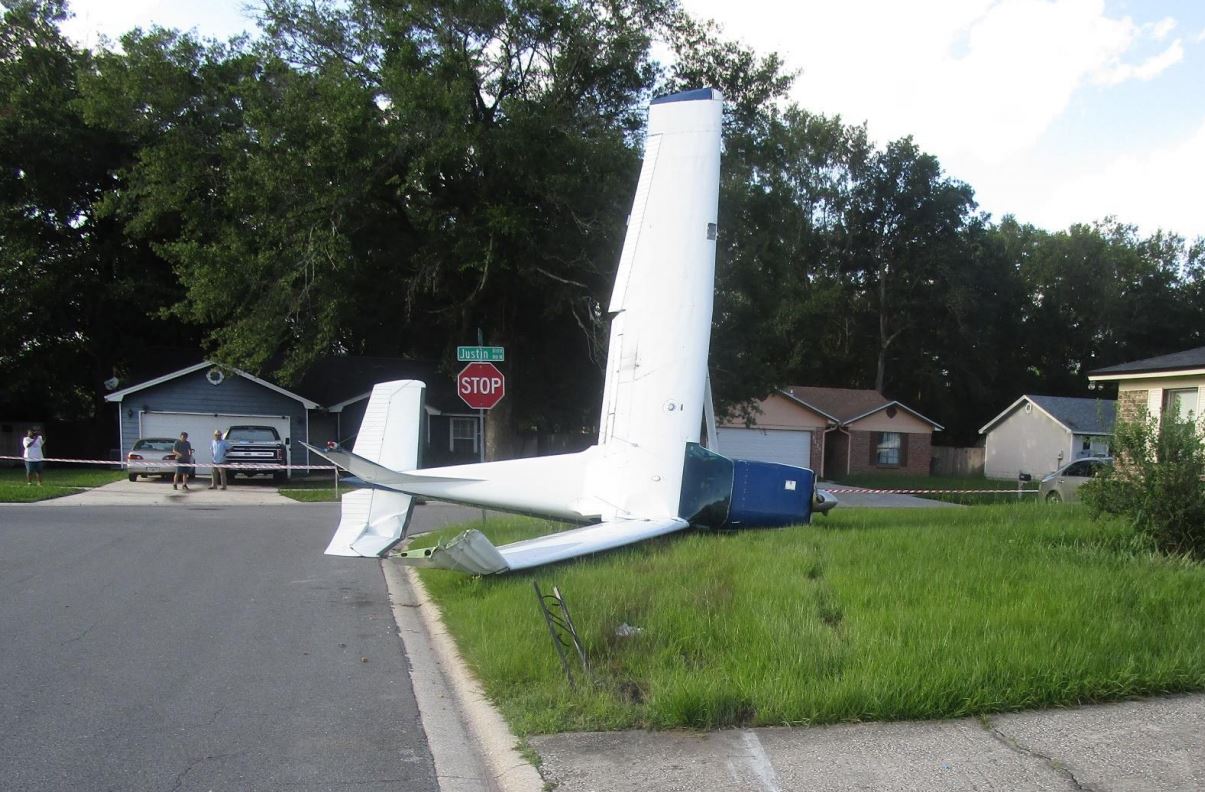
ASN Wikibase Occurrence # 212582
This information is added by users of ASN. Neither ASN nor the Flight Safety Foundation are responsible for the completeness or correctness of this information.
If you feel this information is incomplete or incorrect, you can submit corrected information.
| Date: | Saturday 23 June 2018 |
| Time: | 14:40 |
| Type: |  Cessna 182 Skylane |
| Owner/operator: | Private |
| Registration: | N5682B |
| MSN: | 33682 |
| Year of manufacture: | 1956 |
| Engine model: | Continental IO-470 SERIES |
| Fatalities: | Fatalities: 0 / Occupants: 1 |
| Aircraft damage: | Substantial |
| Category: | Accident |
| Location: | East of Herlong Recreational Airport (KHEG), Jacksonville, FL -
 United States of America United States of America
|
| Phase: | Landing |
| Nature: | Parachuting |
| Departure airport: | Jacksonville-Herlong Airport, FL (KHEG) |
| Jacksonville-Herlong Airport, FL (KHEG) | |
| Investigating agency: | NTSB |
| Confidence Rating: |
The commercial pilot reported that he had been conducting skydiving support flights on the day of the accident. Before his first flight, the airplane had about 23 gallons of fuel onboard. He flew the airplane for about 4.0 hours and then added about 18 gallons of fuel to the airplane. He flew three more local flights and then made a second fuel stop and added 14 gallons of fuel to the airplane. The pilot did not conduct fuel consumption checks to estimate the engine’s fuel consumption rate nor did he check the total fuel quantity in the tanks after the first and second refuelings. After making two more local flights and while on final approach to the airport, the engine lost total power, and the pilot conducted a forced landing to a residential area, during which the right elevator and right wing sustained substantial damage.
After the accident, no fuel was found in the wing tanks; however, the airplane had come to rest on its right side with the right-wing tank breached and the left-wing tank in a position to allow drainage, which likely allowed any remaining fuel to leak out into the ground. Further, the original carburetor engine had been replaced with a fuel-injected engine and wing extensions had been added to the airplane. Performance charts for the airplane did not account for these changes. Therefore, the amount of fuel onboard the airplane when the engine lost power could not be determined. The engine was test-run, and it started and ran successfully. The reason for the loss of engine power could not be determined based on the available evidence.
Probable Cause: A total loss of engine power for reasons that could not be determined due to insufficient evidence.
Accident investigation:
 |
|
Sources:
NTSB
FAA register: http://registry.faa.gov/aircraftinquiry/NNum_Results.aspx?NNumbertxt=N5682B
Location
Images:

Photo: NTSB
Revision history:
| Date/time | Contributor | Updates |
|---|---|---|
| 23-Jun-2018 21:23 | Geno | Added |
| 23-Jun-2018 21:38 | Geno | Updated [Aircraft type, Registration, Cn, Operator, Source] |
| 01-May-2019 09:17 | ASN Update Bot | Updated [Time, Operator, Nature, Departure airport, Destination airport, Source, Narrative, Accident report, ] |
| 01-May-2019 14:22 | harro | Updated [Departure airport, Destination airport, Source, Narrative, Photo] |
Corrections or additions? ... Edit this accident description
The Aviation Safety Network is an exclusive service provided by:


 ©2024 Flight Safety Foundation
©2024 Flight Safety Foundation